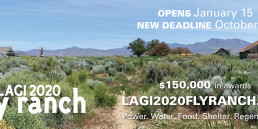Four years ago, the Land Art Generator Initiative co-founders visited Fly Ranch for a weekend campout. The campout sparked an idea and relationships that brought together LAGI, Fly Ranch, and Burning Man Project. Two years later, the Land Art Generator Initiative and Burning Man Project partnered to hold a multi-disciplinary design challenge—LAGI 2020 Fly Ranch—to create the foundational infrastructure for that beautiful remote landscape. The LAGI 2020 Fly Ranch Design Brief invited interdisciplinary teams of artists, architects, landscape architects, engineers, and scientists to propose works of art in the landscape that, in addition to their beauty and the transformational experiences they provide, also function to generate infrastructural contributions under one or more of the following five systems: power, water, food, shelter, and the regeneration of waste streams.
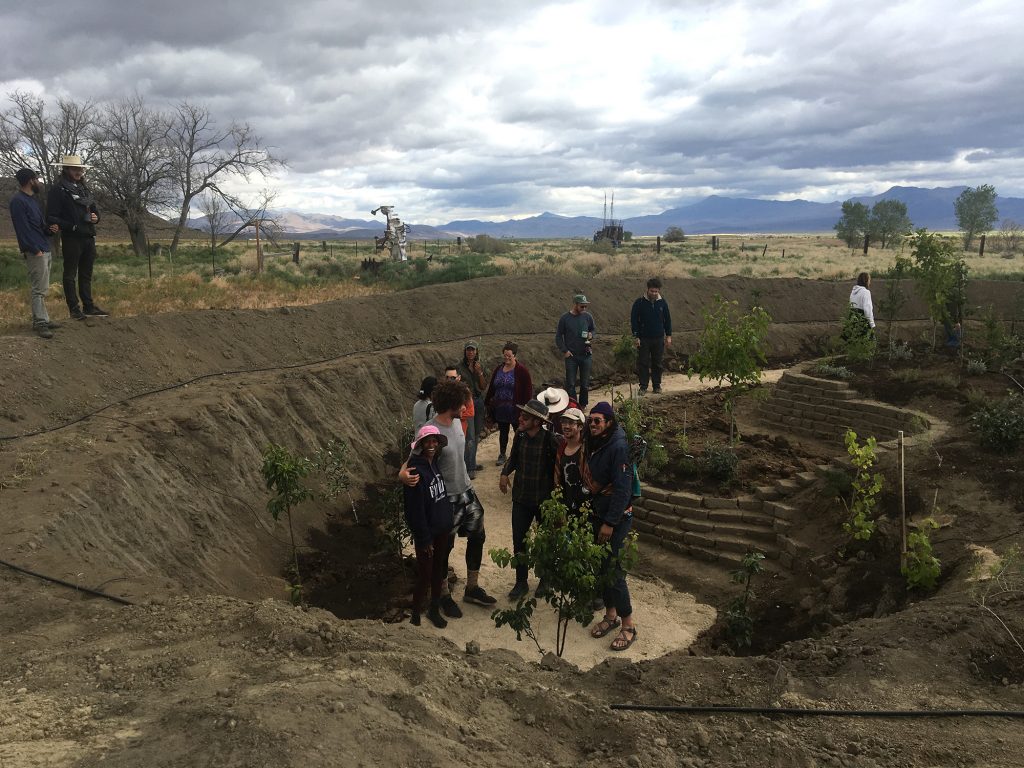
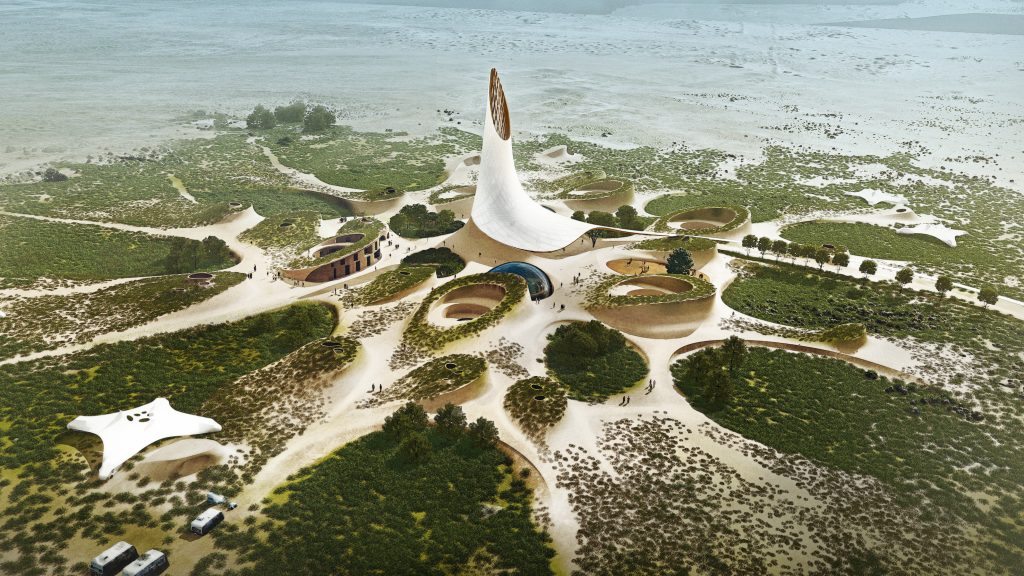
Maps & Overview
The top ten teams were given honoraria grants from Burning Man Project to build a functional prototype. Beginning last year and continuing over the next few years, the teams will explore the feasibility of their proposals and adapt their artistic concepts based on their experiences of the site. As prototyping begins, the layout of this massive landscape for regenerative art is coming together through close coordination between the teams, Fly Ranch volunteers, and LAGI 2020 technical advisors and jurors.
The top map above is from the design guidelines that teams relied on when they made their proposals. Below that is a project maps that show where each team has placed their project as of one year ago. Since then, through conversations, site visits, and research some teams have shifted their desired placement. For the next year and a half, teams will explore and test prototypes. As with other aspects of Fly Ranch, this will be an emergent and collaborative process. The Fly Ranch team will work with LAGI teams, advisors, regulators, and other partners to explore the best approaches for permits, zoning, and water use.


Fly Ranch LAGI Campout
During the last couple weeks of May, 2022, Fly Ranch hosted the latest LAGI prototyping camp in the beautifully unique landscape of Northern Nevada. The weather was great (much cooler than last July’s prototyping camp) and the skies were clear most days until the rains came quite dramatically on the final weekend. After experiences with smoke, wildfires, heat waves, and other climate emergency related issues, Fly Ranch has chosen to primarily focus on May as a viable time to gather.
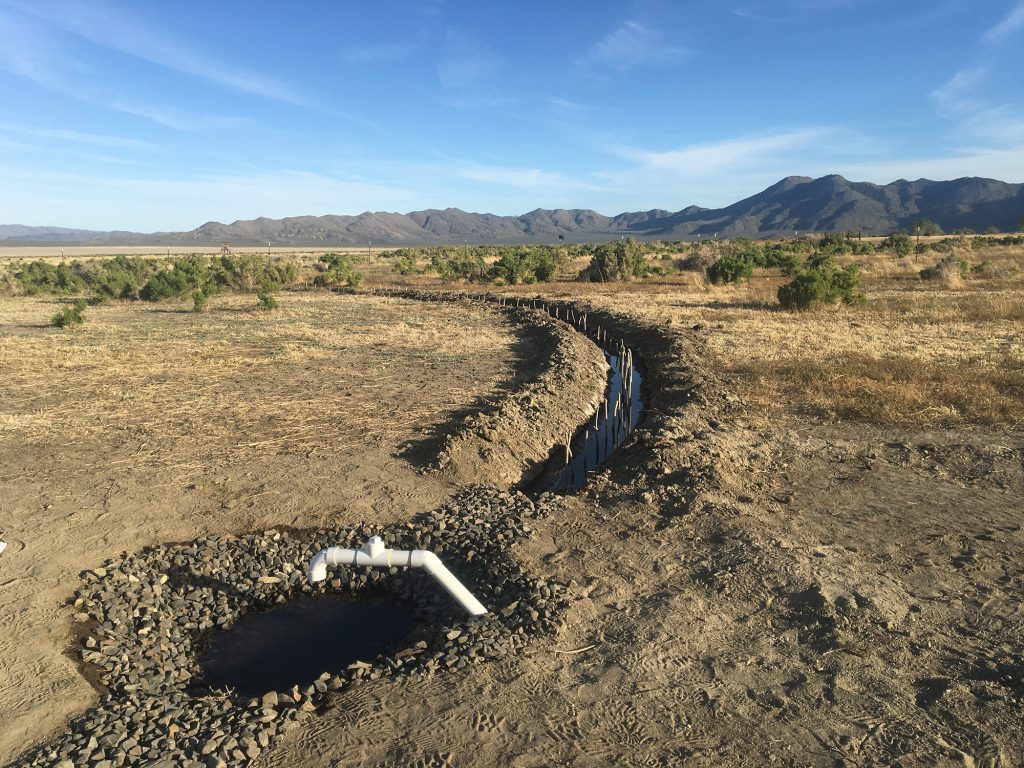
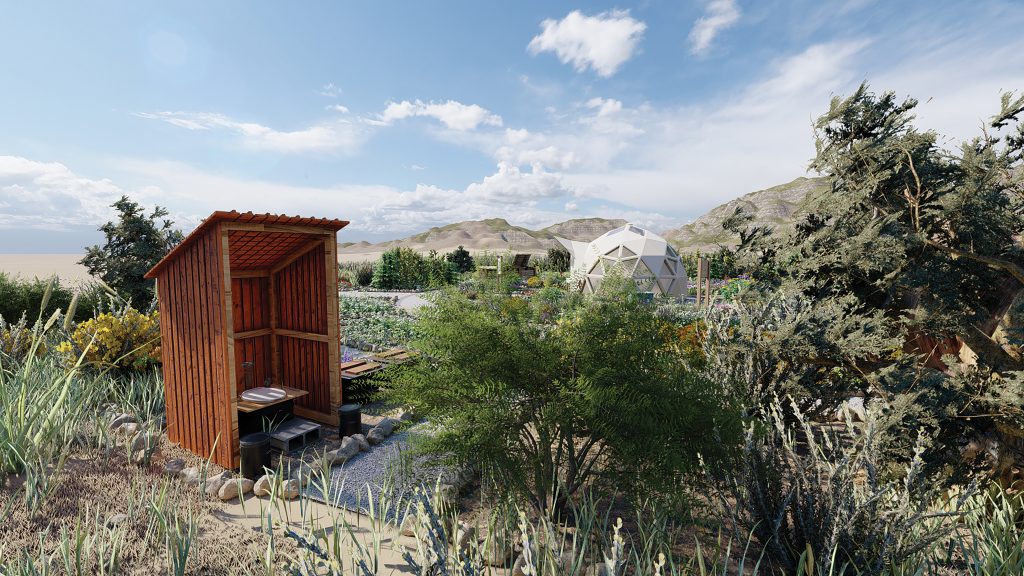
Not all of the top ten teams were able to make it but the teams that were represented included SEED symbiotic coevolution, Ripple, The Source, Coyote Mountain, The Loop, Mountains of Water, Solar Mountain, along with shortlisted teams Made from Dust, and Starship.
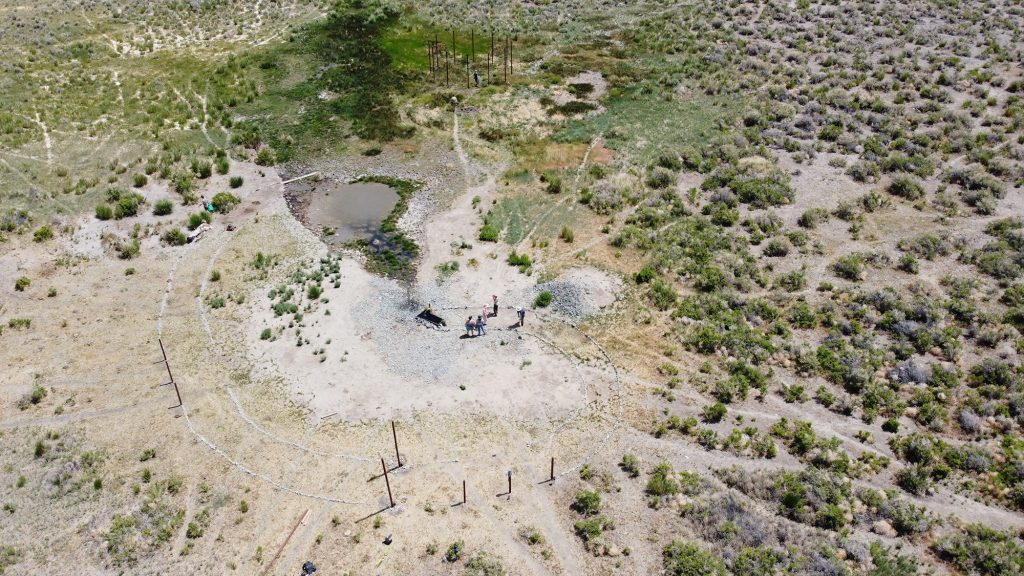
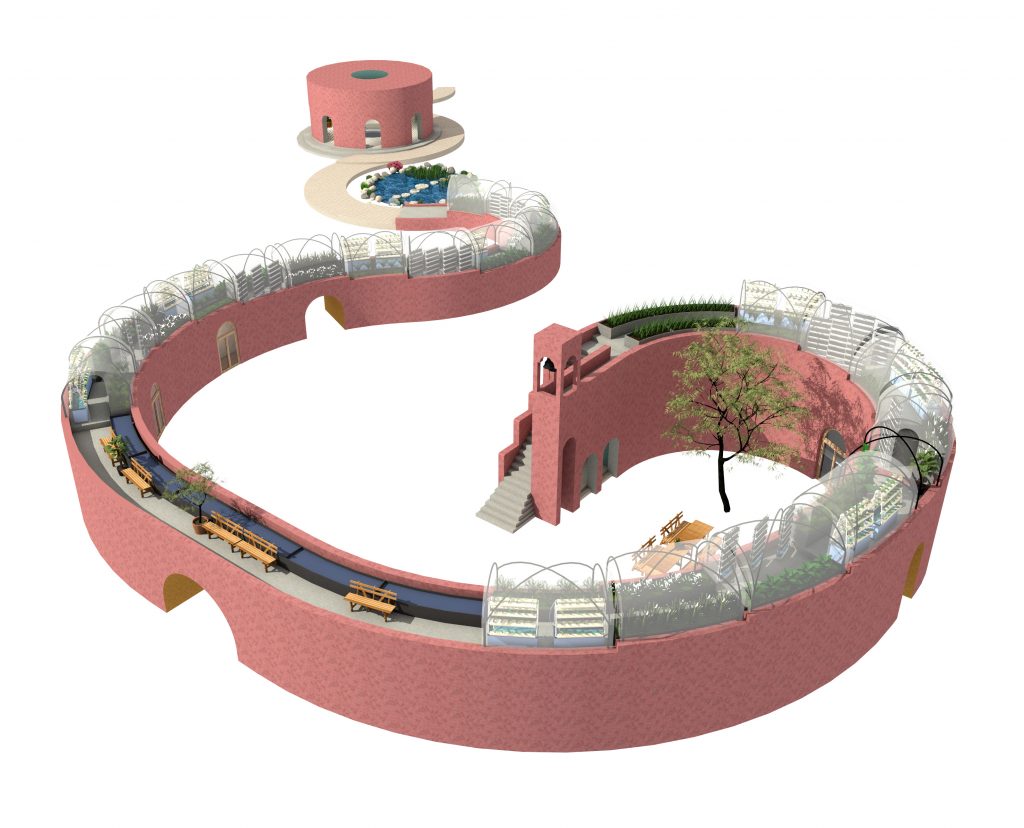
In between soaking trips in the hot springs, delicious meals prepared by the Flying Monkeys, and nature walks organized by the incredibly knowledgeable Fly Ranch Volunteer Coordinator Erika Wesnousky, Friends of the Black Rock High Rock, and other Fly Ranch Guardians
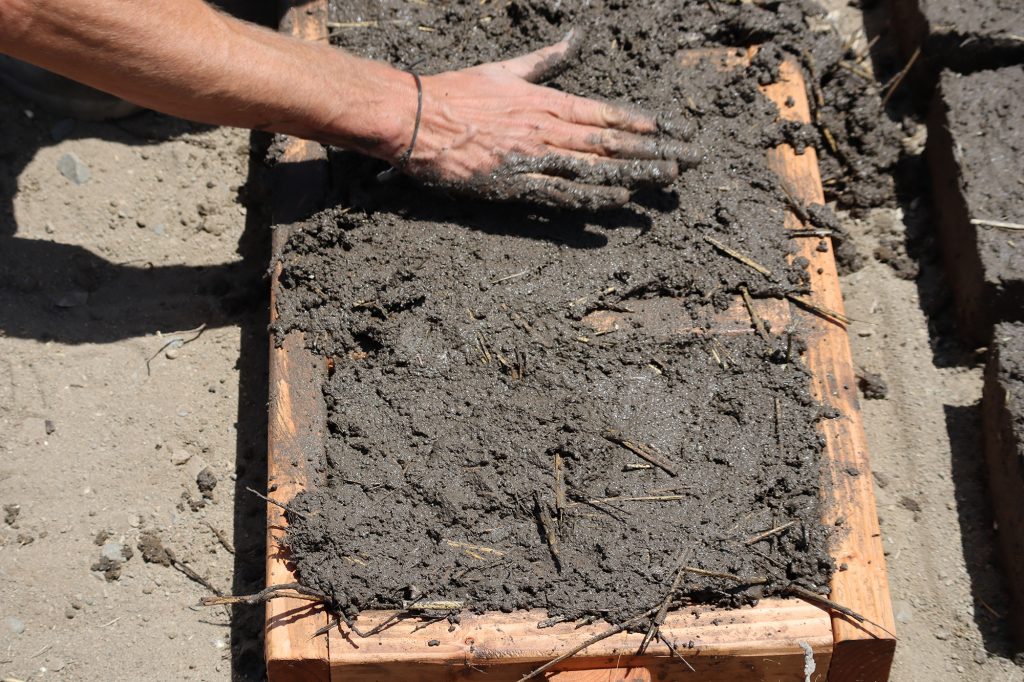
LAGI Project Progress Beyond Fly Ranch
It was a delight to see the LAGI 2020 teams helping each other out, sharing information and lessons learned. Long-time residents of Gerlach offered guidance to those less familiar with the terrain and climate of Northern Nevada. Field trips off into the adjacent foothills of the Granite Range and the surrounding dry lake beds provided inspiration, natural beauty, and a connection to the 15,000 year history of the place. Fly Ranch is on occupied Numu (Northern Paiute) and Newe (Western Shoshone) land. At least four distinct Numu tribes have direct ties to the area. There is more we can learn and do to support Indigenous peoples, address settler colonialism within our culture, and support direct action.
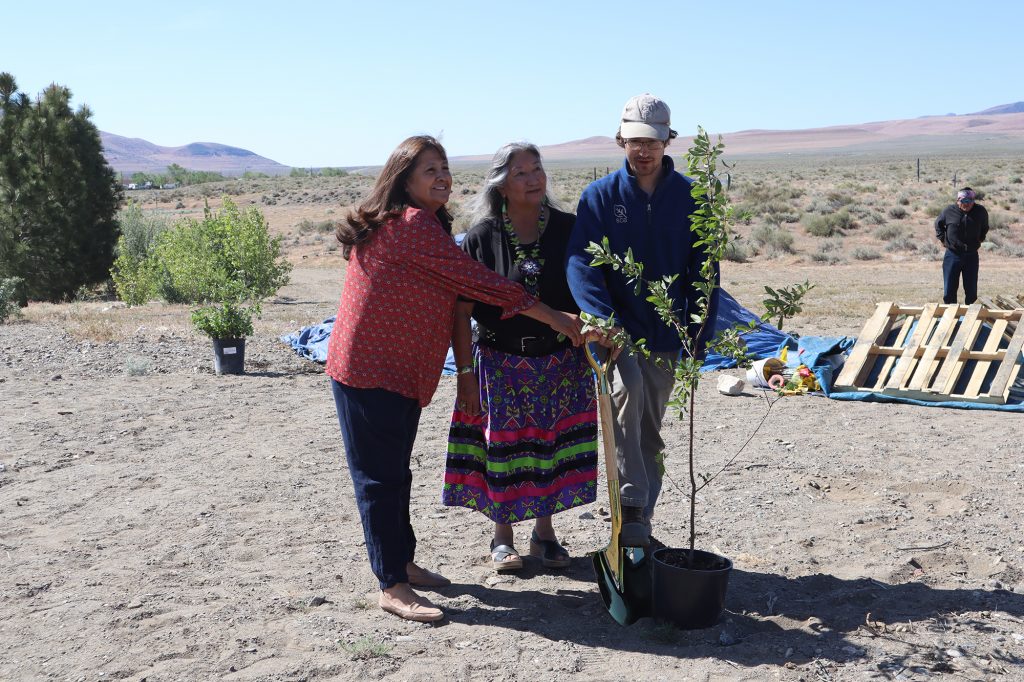
The Ripple team spent a few days planting an ethnobotanical garden and installing an irrigation system at the invitation of and in collaboration with the Pyramid Lake Paiute Tribe at the Pyramid Lake Museum. If you happen to be driving up Rt 447 in Nevada, stop by and learn about nutritional and medicinal uses of the native plant species. Watch this video of the event to learn more.


The Lodgers team was not able to make it out to Nevada, but they recently put together an exhibition, “Architecture Isn’t Just for Humans Anymore,” at the MIT Wiesner Student Art Gallery highlighting their top-ranked LAGI 2020 Fly Ranch design proposal and demonstrating some full-scale prototypes of their construction methods.
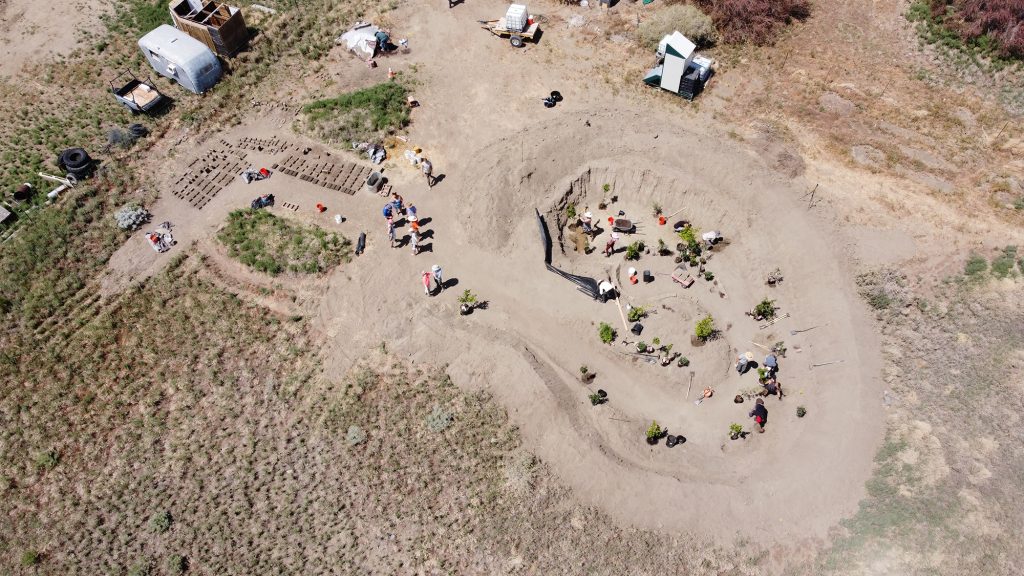
For more information about the LAGI 2020 Fly Ranch artworks, see the website where you’ll find the history and aspirations of the project in text and video along with the design guidelines and the supplemental materials about the site that were provided to the design teams. You can jump right to the shortlisted proposals here.

LAGI 2020 Fly Ranch Book
You can also pick up a copy of “Land Art of the 21st Century” which goes into more detail about the importance of the LAGI 2020 Fly Ranch project in the context of climate change, the circular economy, and the future sustainability of Burning Man Project. For a summary of the book, see a review in The Art Newspaper, which concluded:
Hopefully, Land Art of the 21st Century will inspire action on the climate and ecological emergencies worldwide. The methodologies and design philosophies employed by real-world regenerative structures can be copied. But the real value of these land art installations will be that they embody collective, sustainable and inclusive principles. It is through the creation of new ways of organising our societies that we will discover the wisdom to live together in harmony with our home planet.
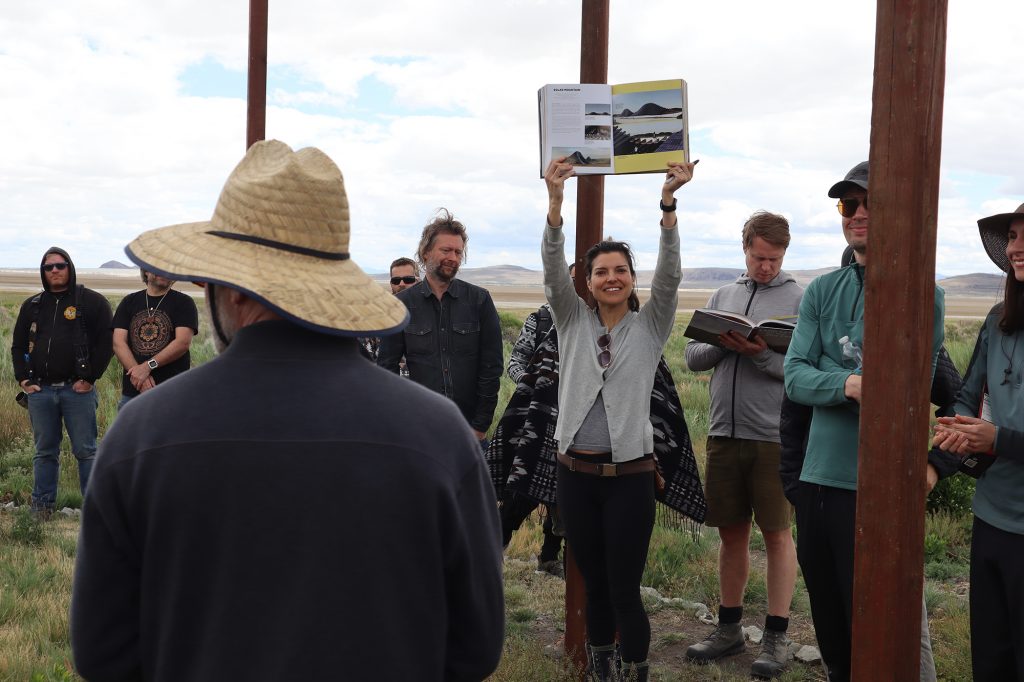
Photo Gallery
Below are some more photographs from the week’s events and a few aerial videos that will give you a feel for the scale of the site. We’re looking forward to the next time we can get back to Fly Ranch learning from these incredible teams and get our hands dirty again helping to build these important works of regenerative land art for the 21st century!
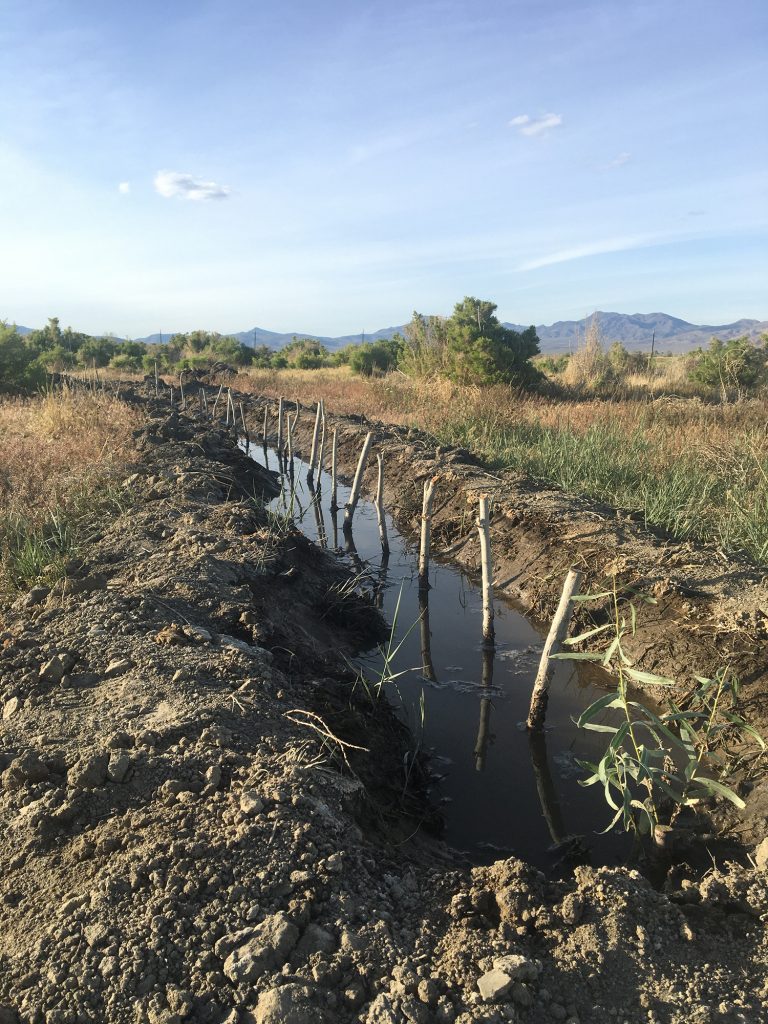
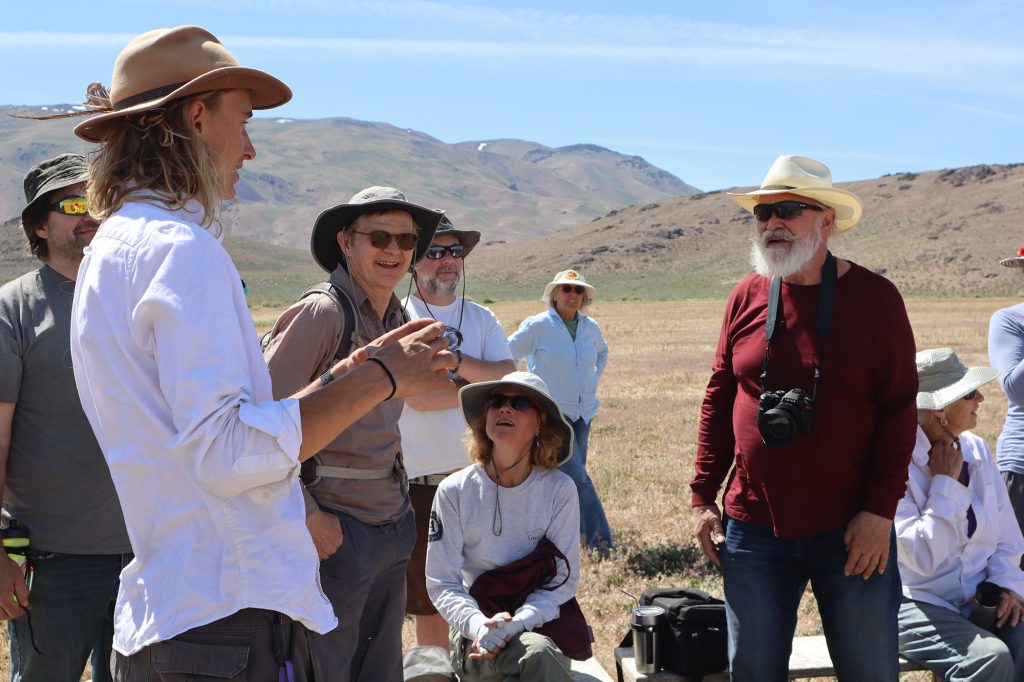
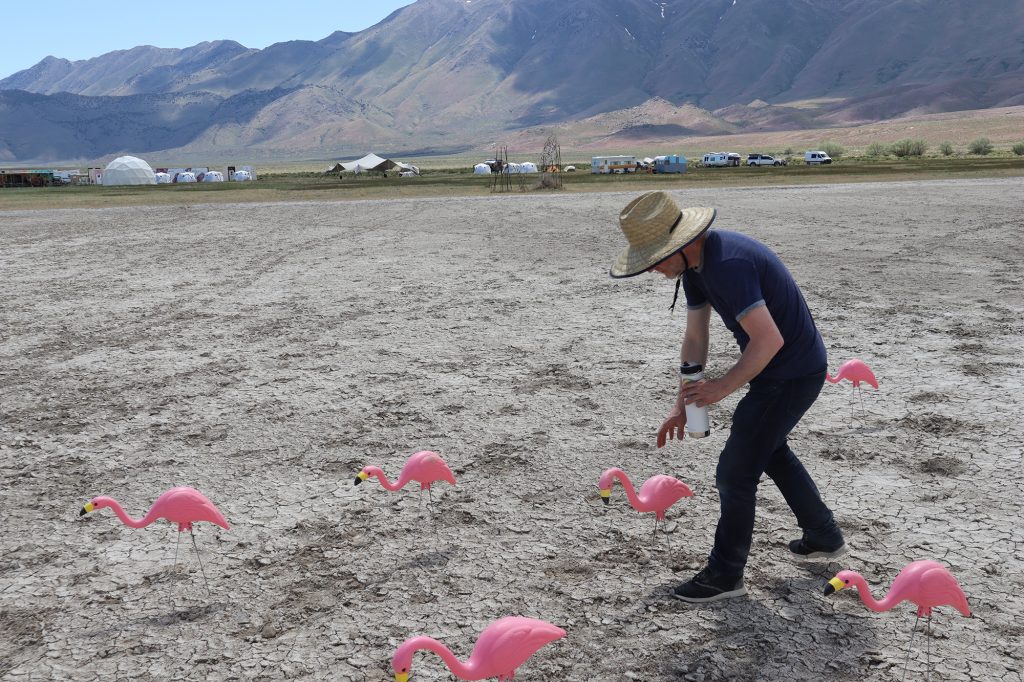
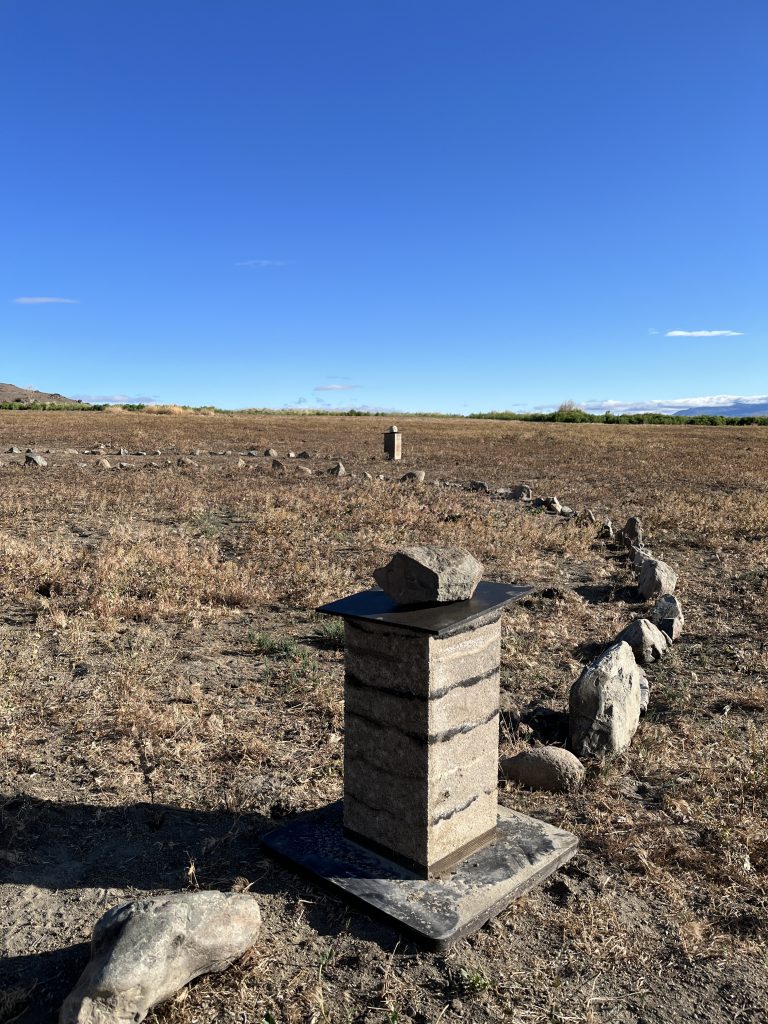
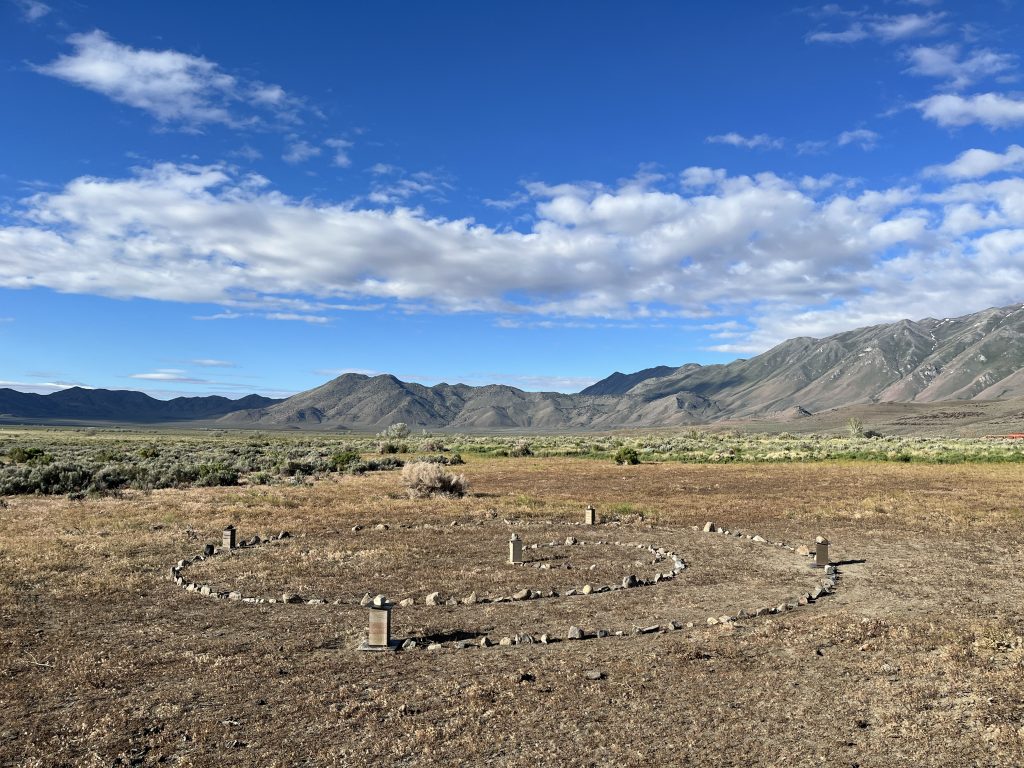
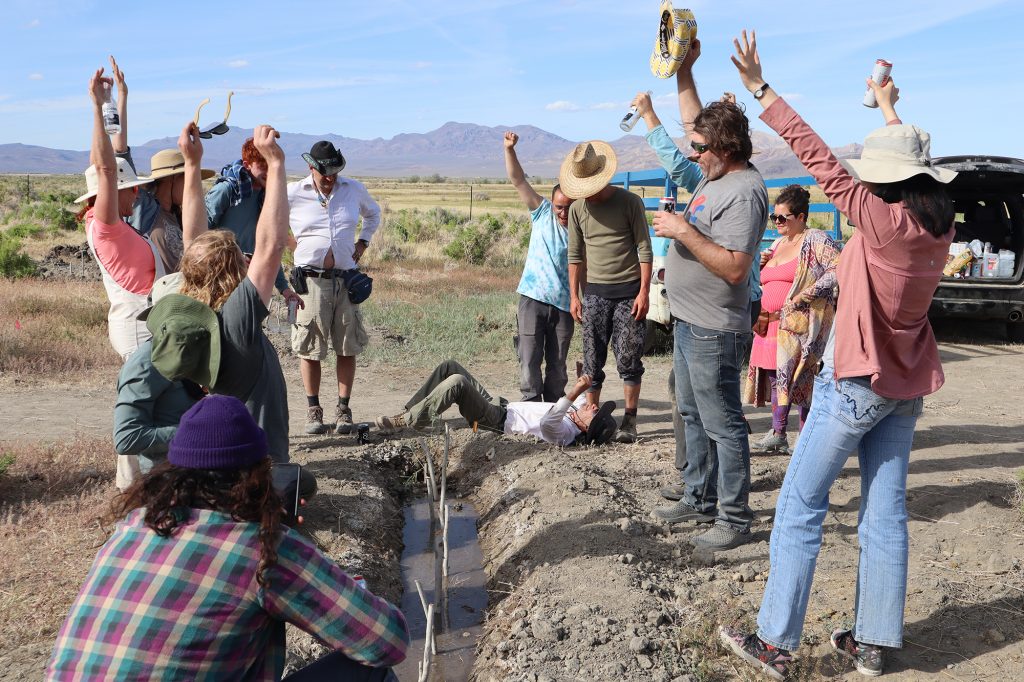
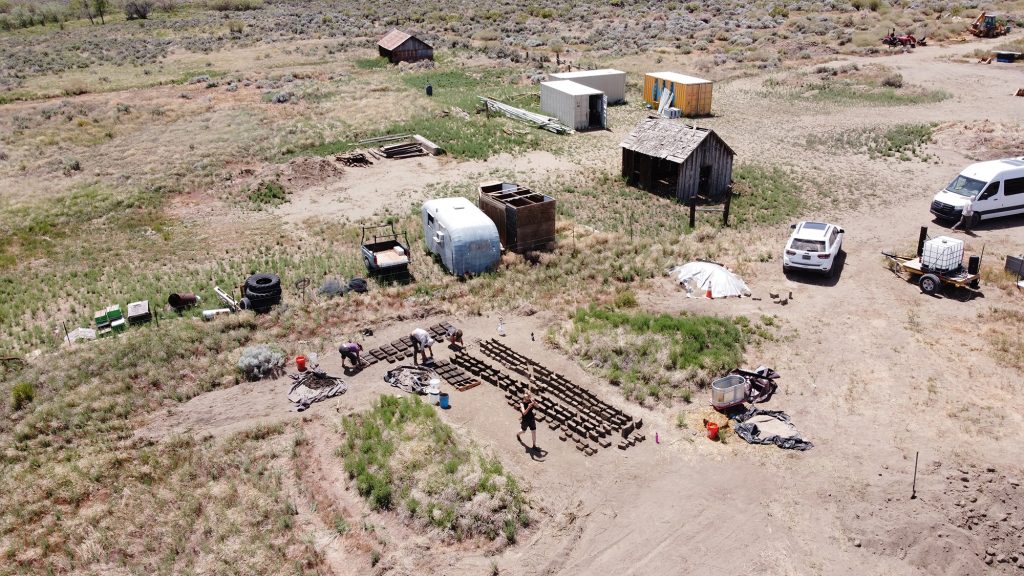
Flying over the future site of Solar Mountain

This high elevation fly over shows the location of a few of the projects that have established their locations at this part of the site. Shortly after this part of the video, the wind picked up and crashed the drone! We found it though and it’s in good shape.
Flying over the site of The Loop


